
Obelisks in Rome Facts & 13 Roman Obelisks You Should Visit
Did you know that there are a total of 13 obelisks in Rome?
That’s a bit bizarre, considering there are only 9 in Egypt!
In this guide, we will take a look at these famous landmarks, explore their history, and find out some interesting facts about these tall beauties.
Contents
- 1 The Short History Of Obelisks In Rome
- 2 Discover Rome with Our FREE Mobile Guidebook
- 3 What Is An Obelisk By Definition?
- 4 How Many Obelisks In Rome – What’s the Significance Of Obelisks In Rome?
- 5 Different Types of Obelisks in Rome
- 6 The List of Obelisks in Rome
- 7 Map Of All The Obelisks In Rome
- 8 3 Most Famous Obelisks In Rome You Should Visit
- 9 4 Facts About Obelisks in Rome You Won’t Hear from your Guide
- 10 FAQs
- 11 Conclusion
The Short History Of Obelisks In Rome
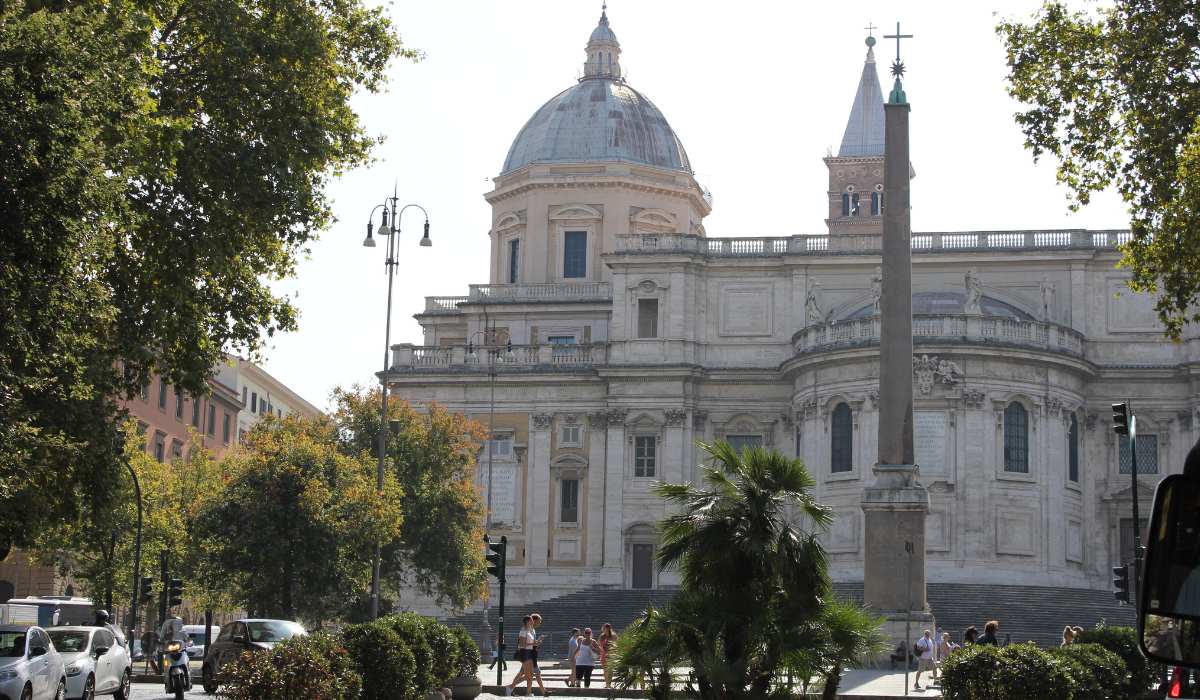
Where did Roman obelisks come from? Well, back in the day, the Romans fell in love with the Egyptian Obelisk.
The love affair began when they annexed Egypt in 30 BC.
That's when they brought the oldest obelisk in Rome – and others – down the Nile and over to Italy in huge ships specially designed for the journey.
Discover Rome with Our FREE Mobile Guidebook
What Is An Obelisk By Definition?
The Roman obelisk is generally defined as a tall pillar, usually made in stone, that points at the top in a pyramid shape.
The Obelisk in Rome Vatican City is a perfect example of the sort of style the befits an obelisk, although this one also has a cross added to the top.
You can see it in St Peter’s Square in the Vatican city.
How Many Obelisks In Rome – What’s the Significance Of Obelisks In Rome?
Rome boasts 13 obelisks. But why did the Romans love them so much?
Well, it harks back to the significance of the obelisk to the ancient Egyptians, and was a showpiece of the Pharoh’s power.
Not only did the Romans want to show this, but it was also a symbol of their expanding empire abroad.
Different Types of Obelisks in Rome

You can generally bucket the obelisks of Rome into two categories – Egyptian and Roman.
Of the thirteen ancient obelisks in Rome, eight were brought from Egypt, and the remainder were designed and manufactured in Rome itself.
A carved obelisk in Rome will feature numerous images or numerals depending on their origins. There are also modern made obelisks that are from recent years that aren’t as full of history.
The List of Obelisks in Rome
Ok, so let’s get stuck into the ins and outs of each of these great obelisks in Rome.
As you read, pick out a few of them to check out – there is many a piazza in Rome with fountains and obelisk views for you to enjoy.
Ancient Egyptian Obelisks in Rome
The obelisks transported from Egypt to Rome serve as a testament to the reach of Roman conquest and their admiration for ancient Egyptian civilization.
Each obelisk has a story of its journey from the sands of Egypt to the cobbled streets of Rome.
Let's delve into the tales of a few significant ones.
The St Peter’s Square Obelisk – Obelisk with Star on Top in Rome
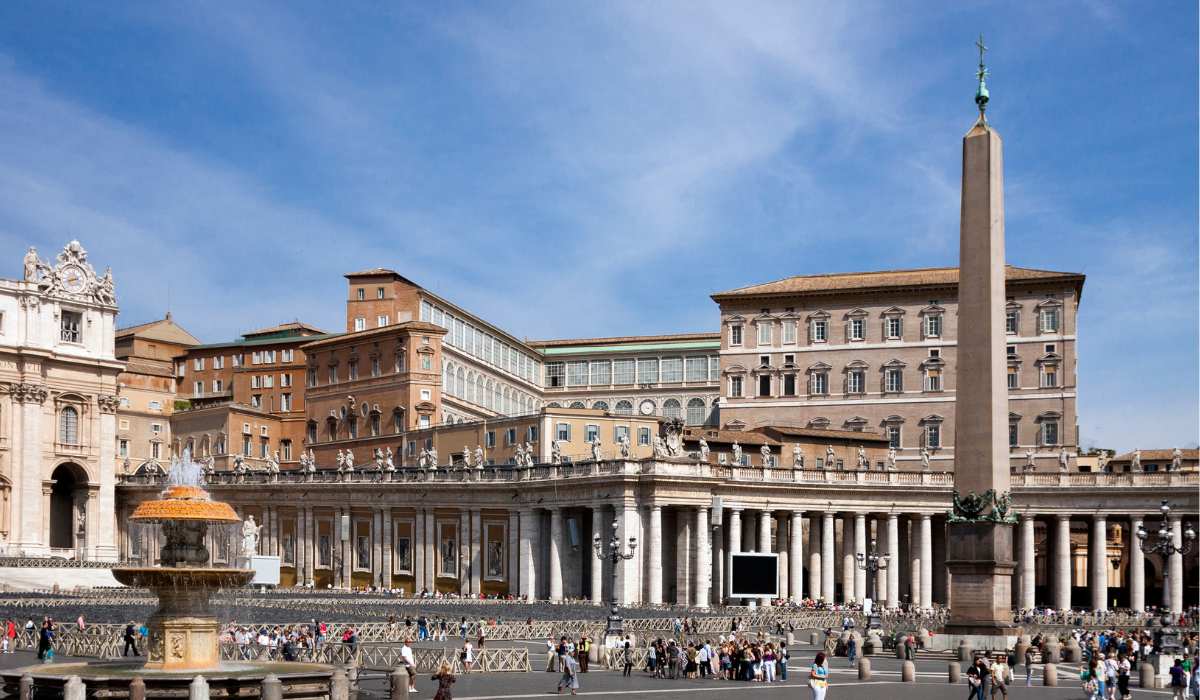
It’s not known exactly who constructed the obelisk in St Peter’s Square Rome also known as Obelisk with star on top in Rome. But we do know it originated in Alexandria in around 30 BC and was brought to Rome in 37AD.
Strangely it doesn’t have any markings, such as hieroglyphics.
In the 16th century, Pope Sixtus V had the obelisk moved again from where it stood near the sacristy to its current spot. The move took over a year, since the structure weighs a whopping 326 tonnes!
The Largest Obelisk in Rome – The Lateranense

Standing in the middle of the Piazza di San Giovanni in Laterano, this is the largest Egyptian Obelisk in Rome, and the heaviest.
It weighed an estimated 455 tonnes. It is thought to have been brought to Rome in 357 AD and was later discovered in three bits in the 16th century.
Pope Sixtus V restored it but it ended up shorter than it used to be – by about 4 meters.
Smallest Obelisk in Rome – The Matteiano

This little baby stands at just over 2.5 meters high and can be found in the gardens of the Villa Celimontana.
It used to be standing with another of the Egyptian Obelisks in Rome (the Macuteo) in Heliopolis. It was brought at some point to Rome and erected in the Temple of Minerva, but it somehow got lost at least twice over the centuries.
It was finally found and re-erected in its current location in 1820, but is smaller than it used to be.
The Macuteo – The Matteiano’s Taller Twin

Like its twin brother the Matteiano, this obelisk originated in Heliopolis and was brought to the Temple of Minerva.
This one was however lost only once and was reestablished in the Piazza Macuteo in 1373.
It is now known as being the obelisk near the Pantheon in Rome as it stands right outside this famous building.
The Flaminio Egyptian Obelisk in Rome

This is one of the longest standing Egyptian obelisks in Rome, and was brought over in 10BC.
It originally stood in the Circus Maximus but was lost, found and reerected by Pope Sixtus V in 1589. It stands today in the Piazza Popolo and is thought to weigh around 235 tonnes.
Minerveo – the Separated Obelisk
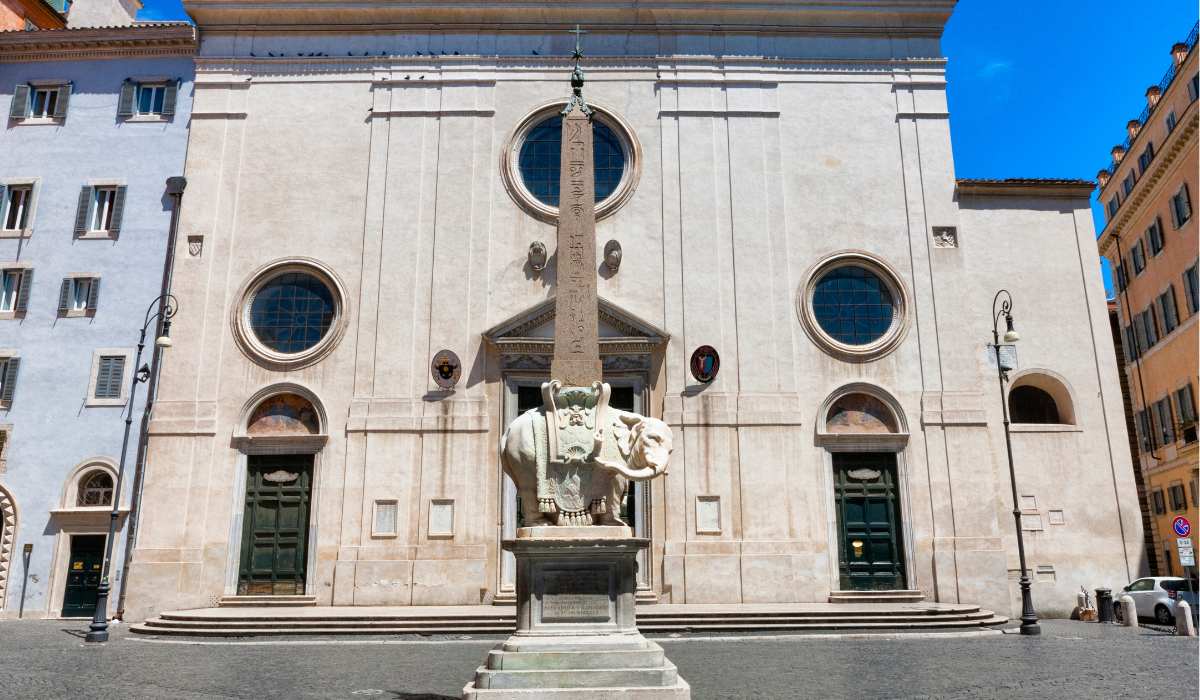
This 5 meter high Obelisk is cute. It used to be part of a pair in the city of Sais in Egypt.
You can find it located behind the Pantheon in the Minerva Square. Its original twin is also still standing, but in the Italian town of Urbino.
Solare – EarlyArrival

This beauty arrived in Rome in 10 BC and like many of the Egyptian obelisks in Rome, it originated in Heliopolis.
The Solare made its way to Rome along with the Flaminio Obelisk. It was lost over time and eventually resurrected outside of the Palazzo Montecitorio in the late 18th century.
Dogali – At the Baths of Diocletian

This is another one of the Egyptian obelisks in Rome that has been separated from its twin.
Originating in Heliopolis it stood at the Temple of Isis, then had a spell in the area around Termini Station, before ending up in its current location at the Baths of Diocletian.
Roman Made Obelisks in Rome
While many obelisks in Rome were originally from Egypt, the Romans, inspired by these monolithic structures, began crafting their own.
These Roman-made obelisks not only served to decorate the city's many piazzas and temples but also showcased the artistic prowess and engineering skills of the Roman people.
Let's explore some of the remarkable Roman obelisks and their stories.
The Piazza Navona Obelisk – Agonalis

This is the tallest of the Roman-made obelisks in the city, standing at over 30 meters high.
It previously stood at the Temple of Serapis, and then at the Circus of Maxentius. At some point in the 17th century an English Earl tried to take this beast over to England!
But that silly idea soon died out, and it now stands in the Piazza Navona instead.
Esquiline
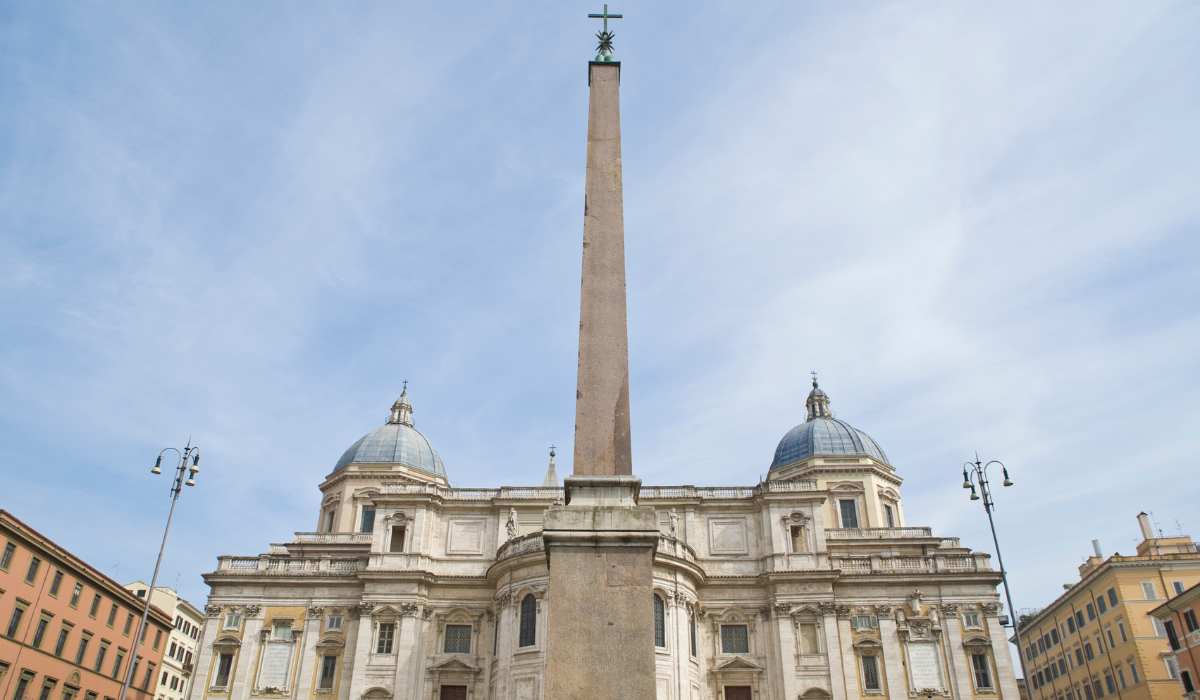
The Esquiline obelisk had been lost at some point in time and was then rediscovered in 1527.
It originally stood at the Augustus Mausoleum, but has been standing since 1587 in the Esquiline Square near the Santa Maria Maggiore church.
It is another one of Rome’s Obelisks that was resurrected under Pope Sixtus V’s quest to bring all the fallen or lost obelisks back to their former glory.
Quirinale

The Quirinale obelisk used to be the partner of the Esquiline, and stood at the Augustus Mausoleum.
It was found at the same time as the Esquiline, but for some reason, it was not resurrected by Pope Sixtus. It was instead only raised again in 1786 in its current location by Pope Pius VI.
Pinciano

This Roman made obelisk used to stand in Tivoli. It was brought into Rome and lost, being found in the 16th century.
The statue now stands on the Pincian Hill, but it was also once located at the Vatican as well as the Barberini Palace.
Sallustiano

You will find this one at the Spanish Steps. It is actually a copy of the Flaminio Obelisk, and originally stood in the Sallust Gardens but can now be visited at the Trinita deI Monti.
In between these two periods the obelisk was moved to the Piazza di San Giovanni in Laterano where it lay on its side until its current location.
Map Of All The Obelisks In Rome
Looking to plan a visit to a few of Rome’s interesting obelisks?
Use this handy map to bake in a stop off as you make your way around the Eternal City.
3 Most Famous Obelisks In Rome You Should Visit
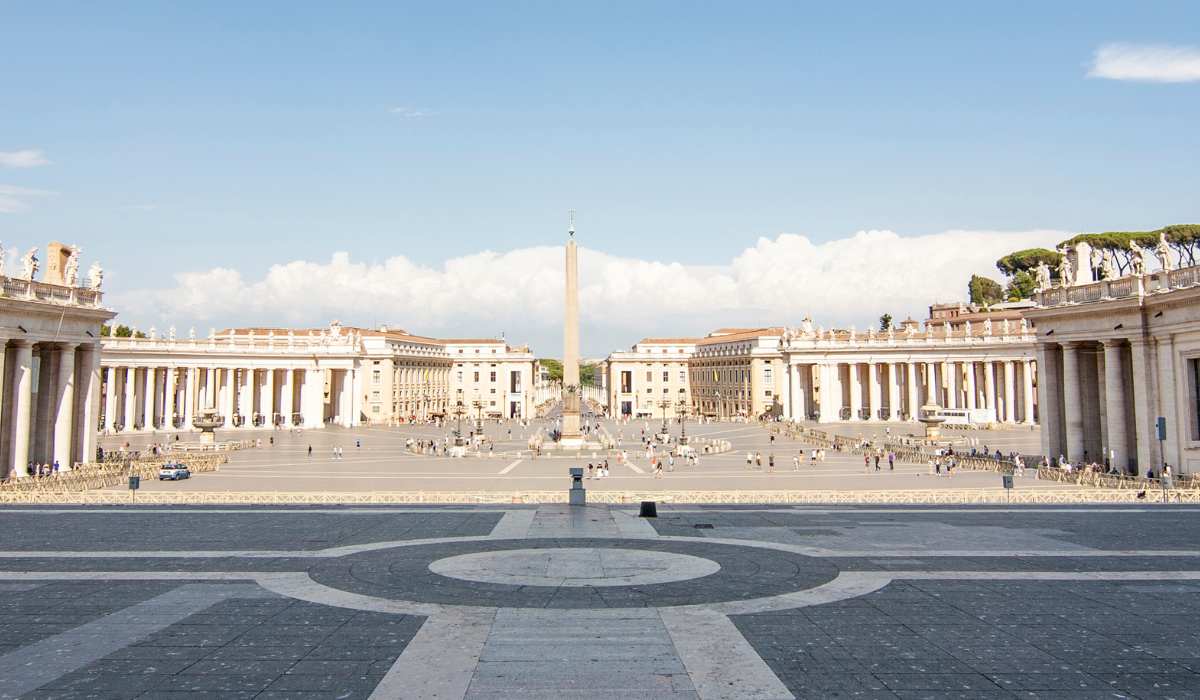
The eternal city of Rome is adorned with numerous obelisks, each telling a story of power, conquest, and reverence.
While every obelisk holds its own significance, a few have particularly stood out over the centuries, capturing the attention and admiration of the entire world.
If you're eager to marvel at these ancient wonders, here are the top three obelisks you shouldn't miss when in Rome.
Vaticano, at St Peter’s Square
Technically it’s in another country but the Vatican obelisk is certainly the most recognisable in Rome.
Probably because it gets a lot of air time when there are masses and other events in St Peter’s Square.
Tip – Consider this early morning St Peter’s Square tour before the crowds so you can get the best views of the obelisk in all its glory.
Flaminio
Another frequently visited and photographed obelisk in Rome is the Flaminio.
Since it's been in Rome since around 10BC it is definitely worth a visit. You’ll get a good look on one of the many tours starting at the Piazza Popolo, such as this Rome evening walking tour.
Lateranense
Rome’s tallest obelisk should also be on your list for a photo opp. You can stop off and see it on your way around the city.
Perhaps you should consider something like a city pass or card which includes free transport, such as the Omnia Card.
4 Facts About Obelisks in Rome You Won’t Hear from your Guide
While your guide might regale you with stories of emperors and conquests, here are a few facts that might have slipped through the cracks about Rome's iconic obelisks:
- The top of the obelisk in St Peter’s Square was rumored to hold the ashes of Julius Caesar. However, on investigation it was found to just be full of dust.
- Some obelisks are thought to have also operated as sundials.
- It is thought that over 300 men were required to provide the manpower to row the Egyptian obelisks to Italy from North Africa.
- When the Romans made their own versions of obelisks, they replicated ancient Egyptian hieroglyphics. But, they didn't bother getting any experts from Egypt to help them, so the transcriptions are basically gibberish!
FAQs

Which obelisk is the most important for Roman history?
The obelisk standing in St Peter’s Square at the Vatican is probably the most famous and important one in the world.
Which obelisk in Rome is the largest/tallest?
The Lateranense obelisk is the tallest in Rome.
Why does Rome have Egyptian obelisks?
Wondering why are there so many Egyptian obelisks in Rome? Well, it's because the Romans saw them as a symbol of power, and also represented their empire.
How many Egyptian obelisks are in Rome?
There are 13 ancient obelisks in Rome - 8 from Egypt and 5 that were made by the Romans themselves.
Conclusion
Got enough info on obelisks in Rome? Now, start planning the rest of your trip.
We have a range of resources, including travel cards, info on the best places to stay in Rome and lots and lots of history!
Fanny is a music and travel lover who has been visiting Rome since 2012. She is the founder and main editor of the Roma Pass blog and she like to share the best things to do in Rome.
